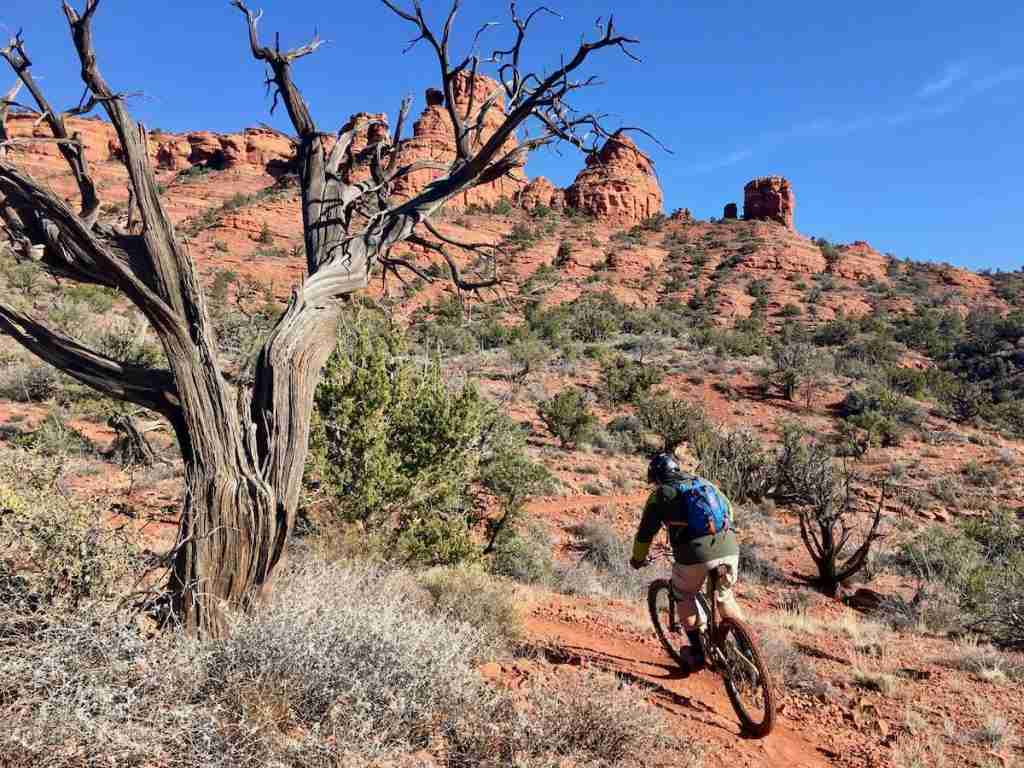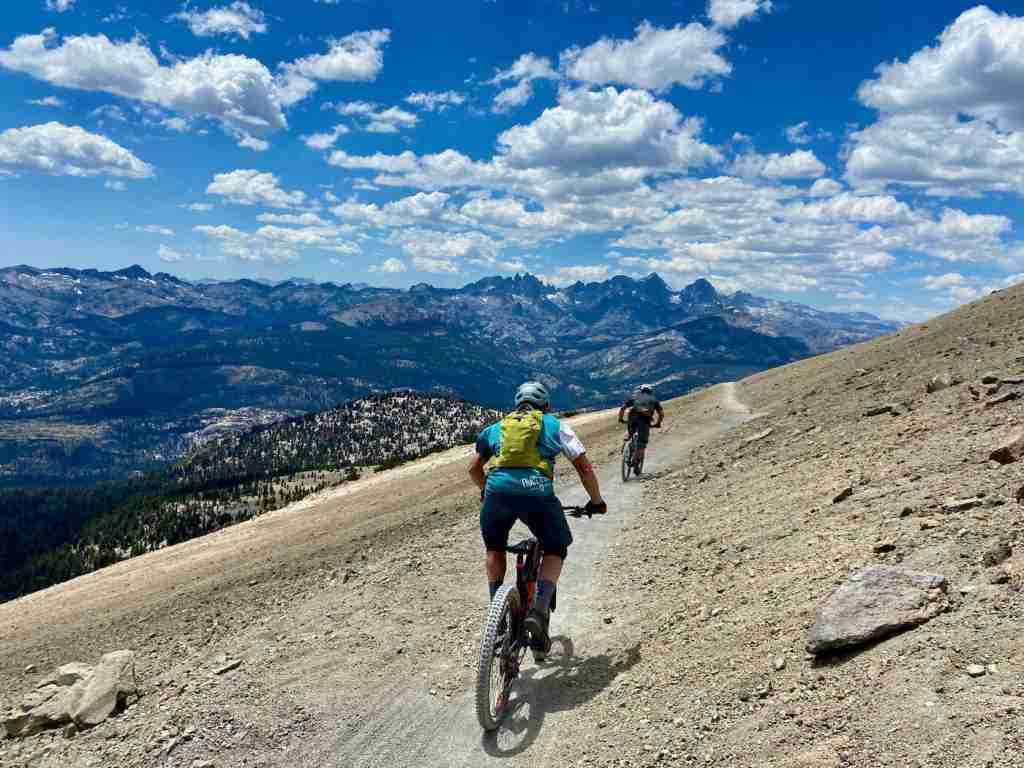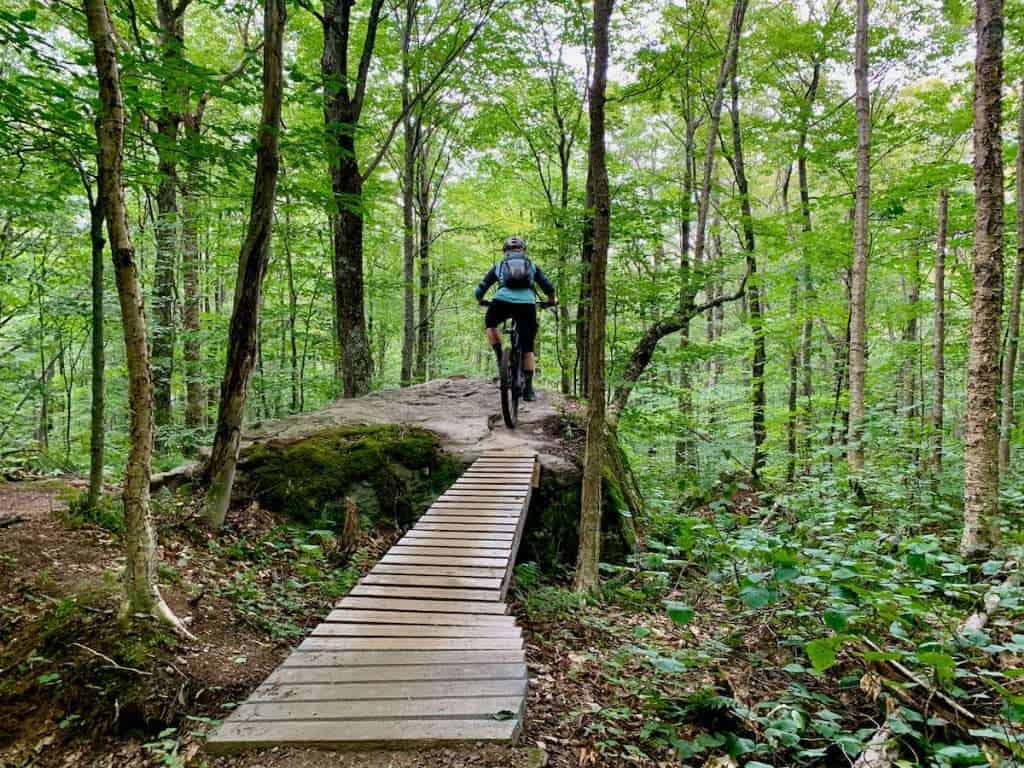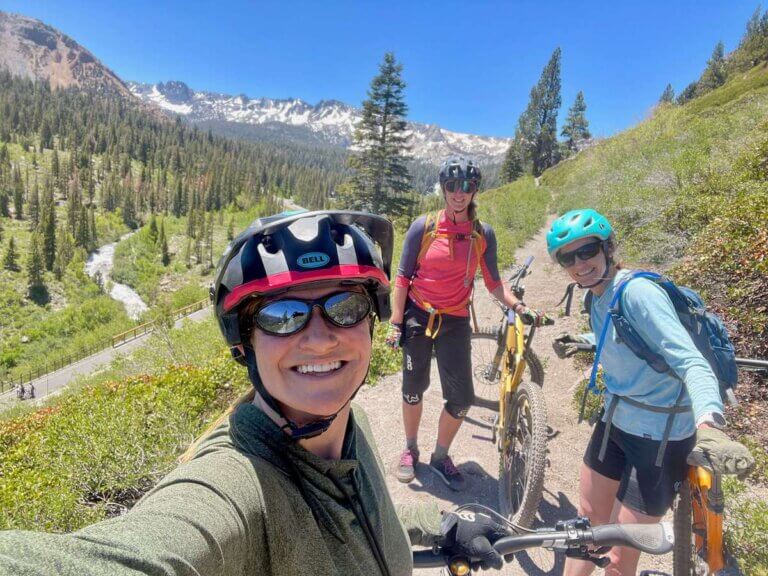West Coast Vs. East Coast Mountain Biking: Which is Better?
West coast mountain biking vs east coast mountain biking: which is better? In this post, I share my thoughts on the pros and cons of each.
There are a lot of opinions out there in the mountain biking world and some can get pretty heated: 27.5” wheels or 29”? Flats or clipless? Fanny pack or backpack? It seems like every rider has an opinion and their opinion is the right one (just Google ‘clipless vs flats’ and you’ll see what I mean). So what about East Coast mountain biking vs West Coast mountain biking? Which one has better trails?
I think this is a worthy debate, although most mountain bikers can probably agree that the best trails are the ones they’re riding right now.
It is worthwhile to break down the differences between east coast mountain biking and west coast mountain biking, though, because they are two very different beasts. I’ve had the pleasure of riding extensively on both coasts, so below I share the main differences and similarities between each.
Read the pros and cons of both East Coast mountain biking and West Coast mountain biking and my thoughts on which one wins out overall.
West Coast Mountain Biking
West coast mountain biking in a nutshell
- Big views of mountain tops, ridges, desert landscapes, the ocean, lakes, etc…
- Smooth-ish singletrack (relative to the east coast)
- Long climbs followed by long descents
- Incredibly varied terrain from desert riding to high alpine singletrack
- Dialed bike parks
- High elevation riding
- Extensive public lands that are open to mountain bikers

A deeper dive into west coast mountain biking
West coast mountain biking cannot be put into a box. There is a little bit of everything from high alpine singletrack traverses that wind through wildflower studded meadows to oceanside trails with big views out to sea.
There’s also desert singletrack lined with cacti and temperate rainforest trails brimming with vegetation. Simply put, west coast riding is incredibly varied and within the span of one road trip, you could ride the desert in Arizona, the Rockies in Utah, and the lush forests of Oregon and Washington.


The style of riding out west is also very different from east coast mountain biking. Out west, the trails are mostly on public lands with long climbs and fun, fast, flowy descents. There can be a ton of tech on the trails in the form of rock gardens and man-made features or the trails could be smooth and buff. There’s also the famous slickrock riding in Utah with huge slabs of pure rock trail.
As for views, west coast riding beats out east coast riding any day of the week. With trails that look out over Zion National Park, the Puget Sound, and the Rocky Mountains, among other impressive sights, mountain biking in the west is never dull.
Explore a few of my favorite west coast mountain bike destinations:
- Sedona, Arizona
- Moab, Utah
- Hurricane, Utah
- Las Vegas, Nevada
- Mammoth Mountain Bike Park
- Downieville, California

East Coast mountain biking
East coast mountain biking In a nutshell
- Tight, twisty networks
- Rocks and roots!
- Short, punchy climbs followed by quick descents
- Mostly wooded trails
- Can often be wet and slippery from humidity and rain
- Trails are primarily on private land

Deeper Dive into east coast mountain biking
East coast mountain biking is quite a bit different than west coast riding. Out east, you’ll find twisty, turny mountain bike networks with trails that cut back on themselves again and again.
Since most east coast mountain bike trails are on private land and there are way less open lands than out west, east coast trail builders need to maximize the land and terrain they have to work with. This could mean 8 miles of trail in 3 square miles of terrain.
And there are roots. Lots and lots of roots. Unless you’re riding machine-built trails where all the roots have been removed, expect to bounce and roll over wet and slippery roots everywhere you go on the east coast. If there aren’t roots, then there will be rocks. Sharp, jolting, wrist-jarring rocks.
These trail obstacles make east coast mountain biking more challenging than a lot of west coast riding because you’re constantly pushing the pedals hard to roll up and over a rock feature or using your arm strength to keep the handlebars in control over rooty sections.
I’m not complaining about east coast riding because there are some super fun places to ride a bike out east, but sometimes I wish it wasn’t so rocky and rooty…
Another thing to keep in mind about east coast riding is that the climbs and descents are much shorter. The east coast doesn’t have the mountainous terrain that the west coast does, so you won’t get those 2-hour long descents.
Explore a few of my favorite east coast mountain bike destinations
So Which is better?
So what’s the verdict? East coast mountain biking or west coast mountain biking?
Truthfully, I love all mountain biking, whether it be rolling over rocks and roots on the east coast or bombing down a flowy ridgeline descent on the west coast.
But if I had to choose one over the other, I would choose the west coast simply because there is more trail variety, bigger networks to ride, and the views are simply breathtaking.
But that being said, east coast mountain biking is super engaging and technical and the views are stunning in their own east coast way.
I wouldn’t say one is better than the other, they’re just very different and if you get the chance, definitely ride both as much as you can!
What is your vote? East coast mountain biking or west coast mountain biking and why? Leave a comment below!
Pin it for later!








What about North Carolina? Pisgah certainly doesn’t have short downhills. Most of the rides I can think of are a 1,000+ foot slog followed by a pretty consistent downhill, with several of my favorite routes being between 2,000-3,000 feet of vertical. I’m sure there are some bigger descents out west, but isn’t that competitive? I think it deserves a mention.
I actually just spent three months in North Carolina around Pisgah and DuPont. The ‘slogs’ are what I didn’t love… True, the downhills are mostly awesome, but the 6-mile gravel road climbs – not so much. I did grow to appreciate Pisgah, but personally I’d never want it to be my everyday riding network.
Thank you for the West vs. East breakdown! As an MTBer in VT, one thing I have found is that there seems to be a West Coast lean in MTB manufacturing. Most of the major manufacturers are out West and it seems like way more bikes are designed to suit West Coast riding. After a lot of research and some great advice from Bootlegger Bikes in Jeffersonville, VT, I ended up going with a Spanish brand (Orbea), because they seem to design bikes with an eye towards being more capable in tight, twisty, technical terrain. I think a lot of folks back East may end up with bikes that were never really designed with our types of trails in mind; at least that is the impression I get from a lot of the bike review content out there.
Great point – I’ve definitely found that my shorter travel 29″ bike is better suited for east coast riding. Another brand to look into is Devinci. They’re made in Quebec. I rode a Devinci Troy for awhile and loved it!
Really underselling the east coast. Discounting the dope park scene in the northeast with quality parks all a relatively short drive from each other. I also don’t know what you mean when you speak of most trails being on “private land”. There are a ton of networks and unlike a lot of places in the west, MTB is not illegal and if it is it is not strongly enforced. West coast riding is dope too but this was too one-sided.
I do think the mountain biking on the east coast is awesome. I’m from Vermont and the trails here are really rad. However, when you compare them to the bike parks and the sheer amount of miles of the west, I (personally) think that the west has far more to offer. That’s just my opinion, though.
In regards to private land, most of the trail networks on the east coast are, indeed, on private land. Some of them are on State Land, but I’d argue the majority is definitely on privately owned land. For example, all of the trails in East Burke, Vermont (aka the Kingdom Trails) are on the private properties of various landowners.